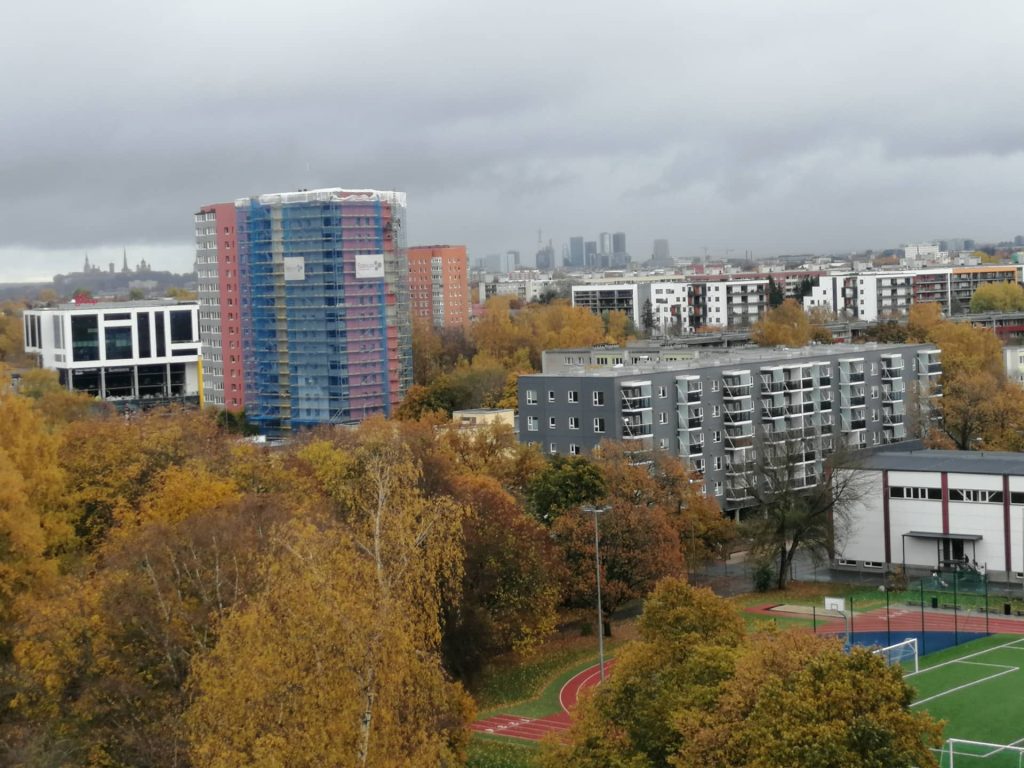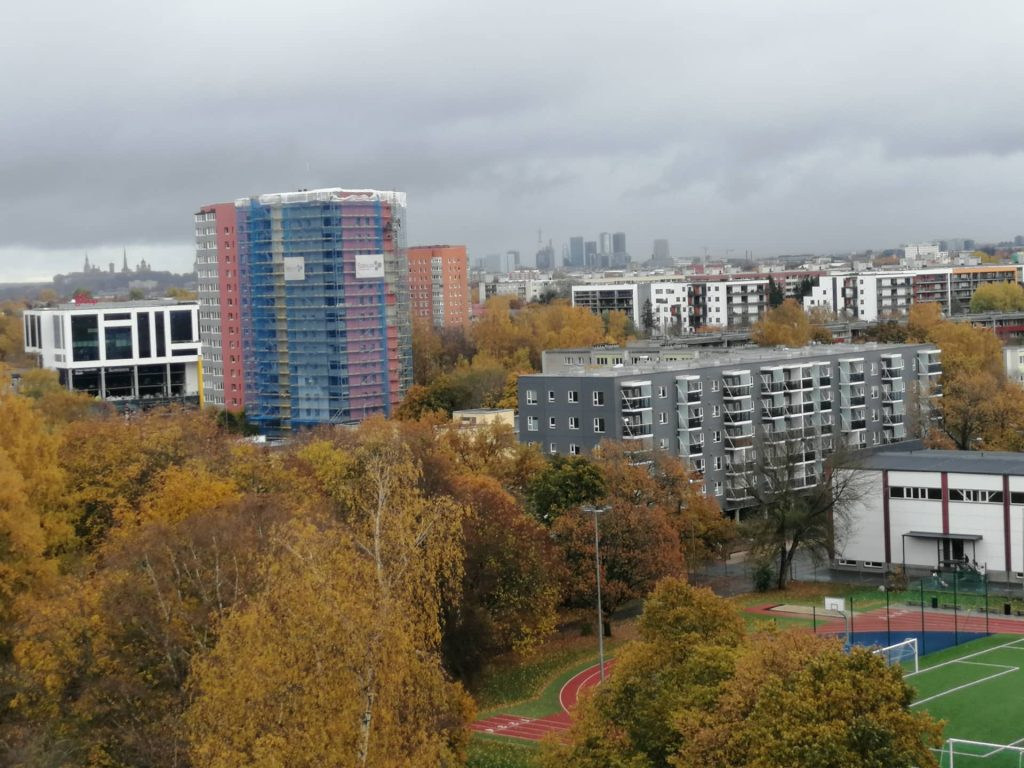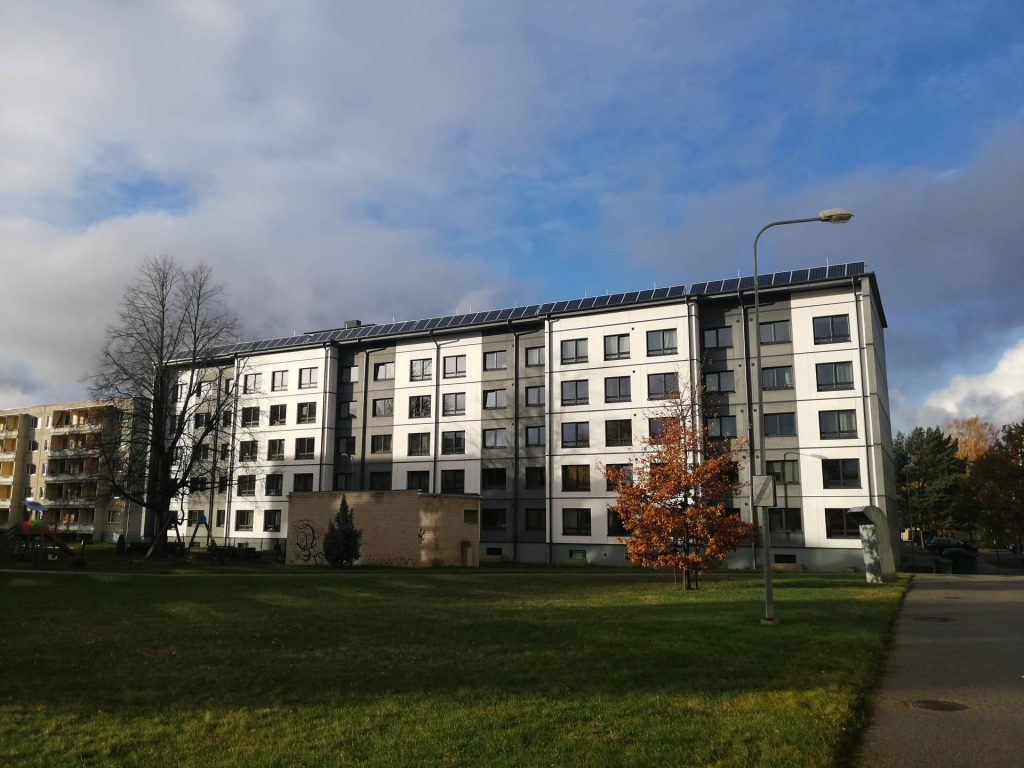Mustamäe district in Tallinn: a typical Soviet-era large-scale estate transformed into a prestigious neighbourhood.

Energy Cities and the Estonian union of cooperative housing associations, organised a study tour on Tuesday 18 October 2022 in the district of Mustamäe in Tallinn, Estonia. The neighbourhood has been undergoing deep transformation, making ambitious and socially inclusive energy renovation of typical post-war building blocks real.
Mustamäe district, the « black hill » district in Estonian, rose from the ground in the South-West of Tallinn in 1952. It was the first soviet district to be built in Estonia after World War II, during which 53% of housing was demolished in Tallinn. The famous “Khrushchyovkas” (named after Nikita Khrushchev, the First Secretary of the Communist Party of the Soviet Union from 1953 to 1964) were used for the construction of its 330 apartment buildings. These prefabricated panel buildings were spread all over the Soviet Union in the 1950s and the 1960s.
The functionality of the district changed when Tallinn University of Technology moved to Mustamäe in 1962. Along with a high immigration rate from other parts of the Soviet Union, setting up a university in the district contributed to an already fast growth of population. From 7,000 residents at the beginning of the construction, the neighbourhood reached 80,000 residents in 1972. At that time, living in the district was a synonym for modernity and comfort for the residing families and students. But by the 1990s, the image of the district had deteriorated, as had the state of the buildings. This led to a first wave of renovation including the renewal of heating units and insulation of facades.
Nearly all buildings have been fully all partially renovated
At the time of publication of this article, 210 apartment buildings have undergone full facade renovation and 84 partial renovations, deploying state-of-the-art energy efficient technologies. District renovation has improved the overall living environment, bringing in more green spaces, better connections through public transport and a real attention to aesthetics.
Today, Mustamäe district is at the crossroads of history and modernity, as a standing witness of Soviet-era construction, and an example for district renovation. It is also an outstanding example of how to foster a sense of responsibility and belonging among neighbourhood residents. Most of them have been living there all their lives. Residents consider the whole neighbourhood as their own home and care about the aesthetics and functionality of their shared spaces as much as about their own properties.

Tallinn University of Technology boosts the project with its know-how on prefabrication technologies
One of the district residents, the Tallinn University of Technology, has been actively contributing to the renovation efforts. Their dormitory building, located on Akadeemia 5A street, is the first multi-apartment building in the Baltics to be renovated with prefabricated panels. The university saw the renovation as an opportunity to research and test prefabrication technologies, setting a model for the rest of the Estonian building owners.
The project has deployed prefabricated wooden modular elements for deep energy renovation and a 3D laser scanning technology to obtain highly precise geometry of the building façades and balconies. Thanks to its accuracy, the 3D technology makes it possible to identify surface irregularities. This is essential for the factory producing insulation elements. The building is equipped with solar panels for electricity generation and hot water production, greywater heat recovery system, sensors and internet-based logging system to monitor energy and water consumption. The project has achieved a nearly zero energy building standard.

Industrial prefabrication solutions have been tested across Europe in various pilot projects and has shown great promise for scaling up building renovation, especially in Eastern European countries where building stock largely consists of typical serial multi-apartment blocks. However, the solution is still not mainstreamed in the renovation and construction industry.
Yet, prefabrication can lead to:
- Better synergies between different technical solutions resulting in greater degree of energy efficiency and lower energy bills.
- Reduced construction time and costs.
- Standardized documentation for building renovation that can further reduce costs, save time and scale up the renovation at district level.
Deep transformation of Mustamäe district proves that holistic and standardised approaches as well as district-scale renovation strategies can offer a solution to achieving Estonia’s ambitious goal: to deeply renovate the whole housing stock by 2050. It is important though to secure affordability and accessibility of housing to the most vulnerable groups. Otherwise, cities risk incentivizing gentrification and displacement of low-income families causing a vicious circle. Finding the balance between cutting-edge innovations in building renovations and ensuring renovation is socially inclusive and affordable is key.
The post Mustamäe district in Tallinn: a typical Soviet-era large-scale estate transformed into a prestigious neighbourhood. appeared first on Energy Cities.
Fuente: ENERGY CITIES
Enlace a la noticia: Mustamäe district in Tallinn: a typical Soviet-era large-scale estate transformed into a prestigious neighbourhood.

